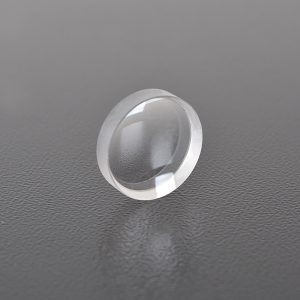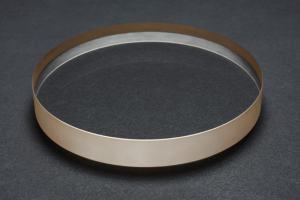
Spherical Lens Factory: the Heart of Optical Manufacturing
Application of parabolic mirrors
In the modern optical industry, spherical lens factories play a vital role. Whether used in glasses, cameras, microscopes, or high-tech fields such as laser equipment and astronomical telescopes, spherical lenses are one of the core components of optical systems. This article will explore in depth the production process, technical difficulties and importance of spherical lens factories in the optical industry.
1. Basic concepts of spherical lenses
A spherical lens is an optical element with spherical curvature, and its surface shape is a part of a sphere. According to the curvature, spherical lenses can be divided into convex lenses and concave lenses. Convex lenses can converge light, while concave lenses can diverge light. Spherical lenses are widely used in various optical systems for focusing, imaging, correcting aberrations, etc.
2. Production process of spherical lens factories
The production of spherical lenses is a highly sophisticated process involving multiple steps, each of which requires strict quality control. The following are the main production processes of spherical lens factories:
1. Material selection
The material of spherical lenses is usually optical glass or optical plastic. Glass materials have high transmittance, low dispersion and good thermal stability, while plastic materials are lighter and easier to process. The choice of material depends on the final application scenario of the lens.
2. Blank cutting
According to the design requirements, large pieces of optical materials are cut into blanks suitable for processing. This step usually uses diamond cutting tools to ensure the accuracy of cutting.
3. Rough grinding and fine grinding
Rough grinding is the process of processing the blank into a shape close to the final shape, while fine grinding further refines the surface of the lens to achieve the curvature radius and surface roughness required by the design. This step usually uses CNC grinders to ensure high precision.
4. Polishing
Polishing is one of the most critical steps in the production of spherical lenses. Through polishing, the lens surface can achieve optical level smoothness, reduce scattering and reflection, and increase light transmittance. Polishing usually uses polishing powder and polishing pads, combined with mechanical or manual operations.
5. Coating
In order to improve the optical performance of the lens, anti-reflection film, anti-reflection film or other functional film layers are usually coated on the lens surface. The coating process is usually carried out in a vacuum coating machine to ensure the uniformity and adhesion of the film layer.
6. Inspection and quality control
Each lens needs to undergo strict optical inspection before leaving the factory, including the measurement of parameters such as curvature radius, surface roughness, transmittance, aberration, etc. Only lenses that meet the design requirements can enter the next process or leave the factory.
3. Technical difficulties of spherical lens factory
The production of spherical lenses seems simple, but in fact it involves many technical difficulties, especially in the manufacturing process of high-precision lenses:
1. High-precision processing
The curvature radius and surface shape of spherical lenses must be accurate to micrometers or even nanometers. Any slight error will cause the performance of the optical system to deteriorate. Therefore, the processing equipment must have extremely high precision and stability.
2. Surface quality control
The roughness and defects of the lens surface will directly affect the propagation and imaging quality of light. The surface quality must be strictly controlled during the polishing process to ensure that there are no scratches, bubbles or other defects.
3. Coating technology
The quality of the coating directly affects the optical performance of the lens. The thickness, uniformity and adhesion of the film layer need to be precisely controlled to ensure the transmittance and anti-reflection performance of the lens at different wavelengths.
4. Material selection and processing
Different application scenarios have different requirements for lens materials. For example, lenses in high temperature environments require materials with high thermal stability, while lenses in laser equipment need to have a high damage resistance threshold. The selection and processing of materials are crucial to the final performance of the lens.
4. The importance of spherical lens factories in the optical industry
Spherical lens factories are one of the core links in the optical industry chain. Whether it is consumer electronics, medical equipment, or aerospace and national defense technology, spherical lenses play an indispensable role. With the continuous advancement of optical technology, the requirements for the accuracy and performance of spherical lenses are getting higher and higher. The technological innovation and manufacturing capabilities of spherical lens factories directly determine the quality and competitiveness of optical products.
1. Consumer electronics
In consumer electronics such as smartphones, cameras, VR/AR devices, spherical lenses are used for imaging, focusing, and correcting aberrations. As consumers’ requirements for image quality continue to increase, spherical lens factories need to continuously improve manufacturing accuracy and optical performance.
2. Medical equipment
In the medical field, spherical lenses are widely used in endoscopes, microscopes, laser surgical equipment, etc. High-precision spherical lenses can improve the imaging quality and treatment effect of medical equipment and provide better medical services for patients.
3. Aerospace and defense
In the fields of aerospace and defense, spherical lenses are used in telescopes, lidar, missile guidance systems, etc. These applications place extremely high demands on the accuracy, durability and environmental adaptability of lenses, and spherical lens factories need to have advanced technology and strict quality control systems.
5. Future development trends
With the continuous advancement of optical technology, spherical lens factories are also facing new challenges and opportunities. In the future, the development trends of spherical lens factories may include:
1. Intelligent manufacturing
With the advancement of Industry 4.0, spherical lens factories will increasingly adopt intelligent manufacturing technologies, such as automated production lines, artificial intelligence quality inspection, etc., to improve production efficiency and product quality.
2. Application of new materials
New optical materials, such as ultra-low dispersion glass, high refractive index plastics, etc., will gradually be used in the manufacture of spherical lenses to meet higher performance optical needs.
3. Customized production
With the diversification of optical applications, spherical lens factories will increasingly provide customized services, designing and manufacturing lenses according to the specific needs of customers to meet the requirements of different application scenarios.
Conclusion
As the core link of optical manufacturing, the technical level and manufacturing capabilities of spherical lens factories directly affect the performance and quality of optical products. With the continuous advancement of optical technology, spherical lens factories will continue to make breakthroughs in technological innovation and manufacturing processes to provide higher quality optical solutions for all walks of life. Whether it is consumer electronics, medical equipment, or aerospace and national defense technology, spherical lens factories will continue to play their irreplaceable role and promote the sustainable development of optical technology.
Hanzhong Brisun Optics Co., Ltd. Is the high precision optical element manufacturer provides customized production of Various optical lenses, including spherical lens, cylindrical lens, optical window, mirror, prism, filter, metal base mirror and other high-precision optical elements. The base materials include various optical glass, fused quartz, calcium fluoride (CaF2), zinc selenide (ZnSe), germanium (GE), silicon (SI), sapphire, metal and other materials. And provide antireflective film, high reflection film, spectroscopic film, metal film and other optical coatings.
Welcome to OEM and Purchasing!
Lorem ipsum dolor sit amet, consectetur adipiscing elit. Ut elit tellus, luctus nec ullamcorper mattis, pulvinar dapibus leo.


